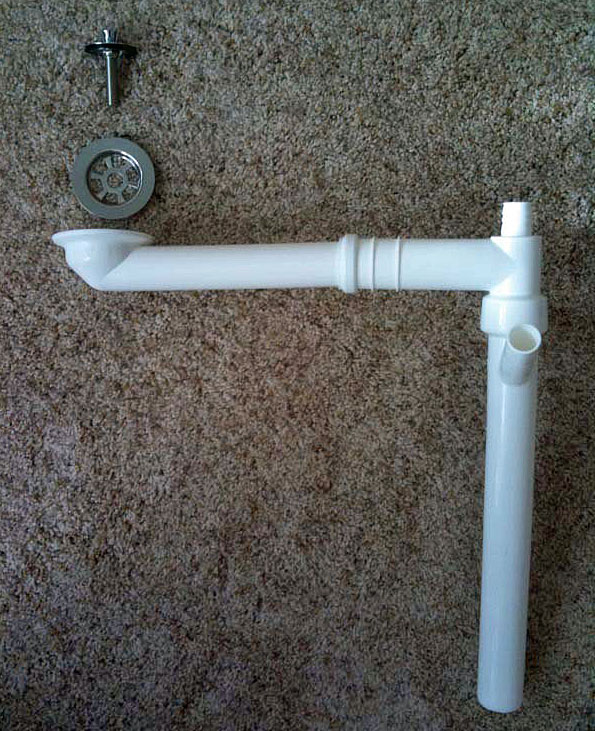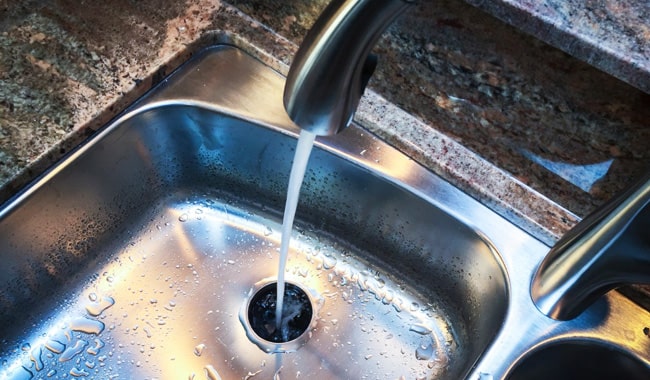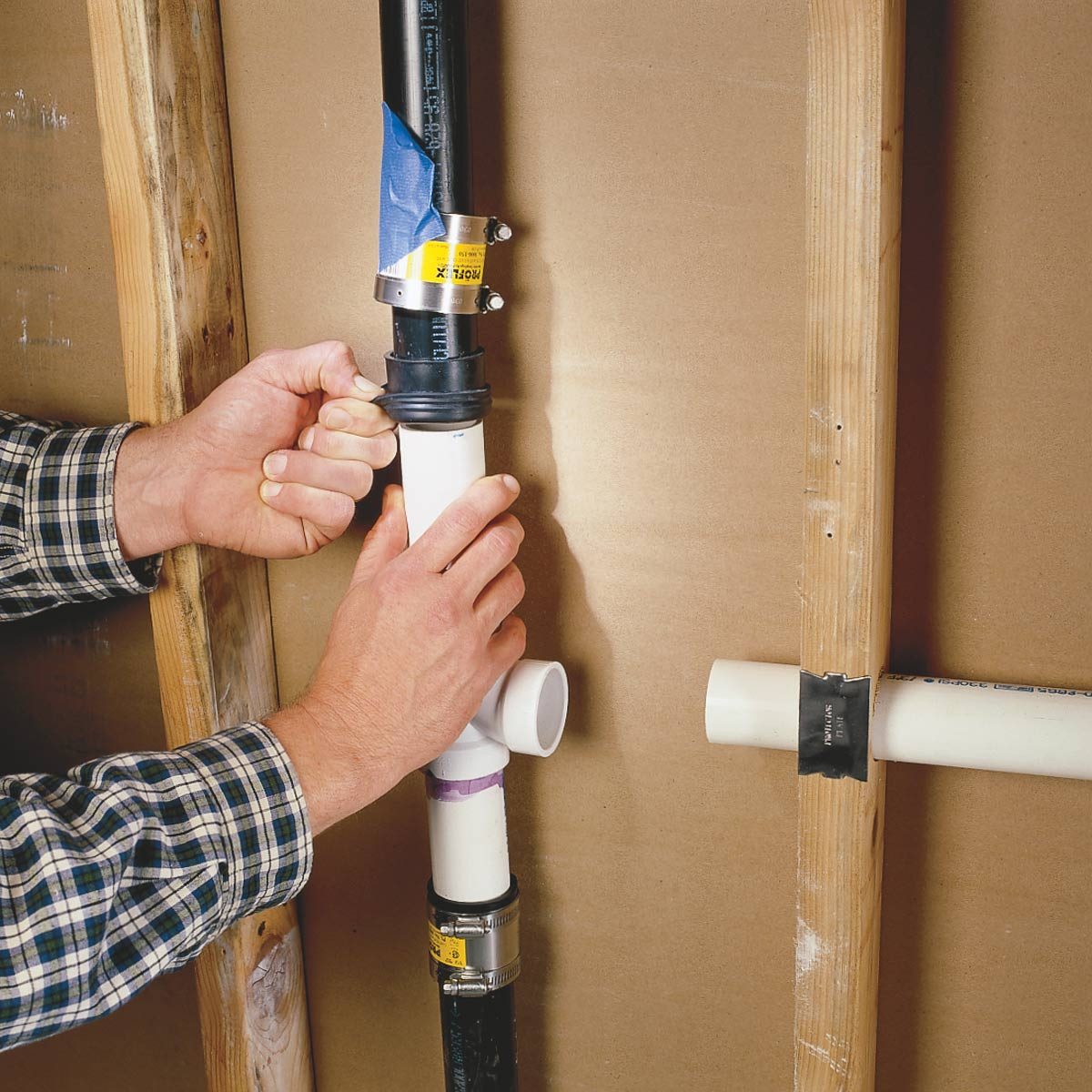The plumbing system of a kitchen sink is a vital component of any household, ensuring the efficient disposal of wastewater and preventing clogs and leaks. Within this system, PVC drain parts play a crucial role in facilitating the flow of water from the sink to the sewer or septic system. Understanding the different types and functions of these PVC drain parts is essential for maintaining a well-functioning kitchen sink. Let’s explore the various aspects of kitchen sink PVC drain parts and how they contribute to the overall plumbing system.

Anatomy of a PVC Drain System
A typical PVC drain system for a kitchen sink consists of several key components, each serving a specific function in the wastewater disposal process. These components include the P-trap, tailpiece, drainpipe, and fittings such as elbows and couplings. The P-trap, located beneath the sink, is designed to prevent sewer gases from entering the home while allowing wastewater to flow freely. It features a curved section of pipe that retains a small amount of water, creating a seal that blocks odors from the sewer line.
The tailpiece connects the sink drain to the P-trap, while the drainpipe carries wastewater from the P-trap to the sewer or septic system. Fittings such as elbows and couplings are used to connect and redirect the flow of water as needed, allowing for flexibility in the installation process. Together, these PVC drain parts work harmoniously to ensure the efficient and hygienic disposal of kitchen wastewater, preventing backups and maintaining proper drainage.

Choosing the Right PVC Drain Parts
When selecting PVC drain parts for your kitchen sink, several factors should be taken into account to ensure compatibility and functionality. The size and configuration of your sink, as well as the layout of your plumbing system, will influence the type and quantity of PVC drain parts required. Standard sizes for PVC drain pipes and fittings include 1 1/2-inch and 2-inch diameters, with variations available to accommodate different sink designs and installation requirements.
Consider the material and quality of the PVC drain parts, as these factors can impact durability and performance over time. While PVC is a popular choice for drainpipes and fittings due to its affordability and corrosion resistance, be sure to select products that meet industry standards and specifications for strength and reliability. Look for PVC drain parts that are certified by reputable manufacturers and backed by warranties for added peace of mind.
Assess your specific plumbing needs and preferences when choosing PVC drain parts for your kitchen sink. For example, if you anticipate heavy use or frequent clogs, consider investing in reinforced or high-capacity drainpipes and fittings to ensure optimal flow and drainage. Similarly, if space constraints or installation challenges are a concern, explore compact or flexible PVC drain parts that can be easily maneuvered and adjusted to fit your requirements.

Installation and Maintenance
Proper installation and maintenance are essential for ensuring the longevity and efficiency of PVC drain systems in kitchen sinks. Whether you’re replacing existing drain parts or installing a new system, follow manufacturer guidelines and industry best practices to achieve a secure and leak-free connection. Begin by carefully measuring and cutting PVC pipes and fittings to the appropriate lengths, using a hacksaw or pipe cutter for precision.
Next, dry-fit the PVC drain parts together to ensure proper alignment and fit before applying PVC cement or solvent weld to create a permanent bond. Be sure to use the appropriate type and amount of cement for the specific PVC materials being joined, and follow curing times and safety precautions as directed. Once the PVC drain system is assembled, test for leaks and proper drainage by running water through the sink and observing the flow and performance.
In terms of maintenance, regularly inspect PVC drain parts for signs of wear, corrosion, or damage, such as cracks, leaks, or loose connections. Address any issues promptly to prevent water damage and mold growth, and replace worn or defective PVC components as needed. Additionally, keep drainpipes and fittings clean and free of debris by flushing with hot water or using a plumber’s snake or drain auger to remove obstructions and buildup.

Common Problems and Solutions
Despite their durability and reliability, PVC drain systems in kitchen sinks may encounter occasional issues that require troubleshooting and repair. Common problems include clogs, leaks, foul odors, and slow drainage, which can disrupt the function and efficiency of the plumbing system. In many cases, these issues can be resolved with simple DIY solutions or professional assistance if necessary.
Clogs are often caused by food debris, grease, soap scum, or other substances accumulating in the drainpipe or P-trap over time. To clear minor clogs, try using a plunger or a combination of baking soda and vinegar to break up the obstruction. For stubborn clogs, use a plumber’s snake or drain auger to dislodge the blockage and restore proper flow. Prevent future clogs by avoiding the disposal of grease, oil, or fibrous materials down the drain and using a mesh drain strainer to catch debris.
Leaks in PVC drain systems can occur at joints, connections, or cracks in the pipes or fittings, leading to water damage and mold growth if left untreated. Inspect the affected area for signs of moisture or discoloration, and tighten loose connections or replace damaged components as needed. Apply PVC primer and cement to reinforce joints and create a watertight seal, ensuring a secure and leak-free connection.
Foul odors emanating from the kitchen sink may indicate a buildup of organic matter or bacteria in the P-trap or drainpipe. To eliminate odors, flush the drain with hot water and a mixture of baking soda and vinegar to neutralize bacteria and dissolve organic residue. Periodically clean the P-trap and drainpipe with a mild detergent or specialized drain cleaner to prevent odor-causing buildup and maintain a fresh-smelling sink.
Slow drainage is often the result of a partial clog or obstruction in the drainpipe or P-trap, impeding the flow of wastewater from the sink. Use a plunger or drain auger to clear the blockage restore proper drainage, and follow up with regular maintenance to prevent future issues. Additionally, avoid pouring hot grease or oil down the drain, as it can solidify and constrict the flow of water, leading to clogs and backups.

Common Mistakes to Avoid:
Using Incorrect Size or Type of PVC Drain Parts: Ensure compatibility and functionality by selecting PVC drain parts that are appropriate for your sink and plumbing system.
Improper Installation Techniques: Follow manufacturer guidelines and industry best practices when installing PVC drain systems to prevent leaks, misalignments, and other installation errors.
Neglecting Maintenance and Inspections: Regularly inspect and maintain PVC drain parts to prevent clogs, leaks, and other plumbing issues, and address any problems promptly to avoid costly repairs.
Ignoring Warning Signs: Pay attention to signs of trouble such as slow drainage, foul odors, or leaks, and take proactive measures to address underlying issues before they escalate into major problems.
Can I use PVC drain parts for my kitchen sink if I have a garbage disposal?
Yes, PVC drain parts are compatible with garbage disposals and can be used to connect the disposal unit to the sink drain and sewer or septic system.
How often should I replace PVC drain parts in my kitchen sink?
The lifespan of PVC drain parts depends on factors such as usage, water quality, and maintenance practices. Generally, PVC drain systems can last for several years with proper care and upkeep, but individual components may need to be replaced periodically due to wear or damage.
Can I install PVC drain parts myself, or do I need to hire a professional plumber?
DIY installation of PVC drain parts is possible for those with basic plumbing skills and knowledge. However, if you’re unsure or uncomfortable with the installation process, it’s advisable to consult a professional plumber to ensure proper assembly and functionality.
Are PVC drain parts environmentally friendly and safe for use in kitchens?
PVC drain parts are generally considered safe and environmentally friendly for use in kitchens. PVC is a durable and non-toxic material that is resistant to corrosion and degradation, making it suitable for handling wastewater in residential plumbing systems.
What should I do if I encounter a major plumbing issue with my kitchen sink PVC drain system?
If you experience a major plumbing issue such as a severe leak, persistent clog, or malfunctioning component in your kitchen sink PVC drain system, it’s best to contact a licensed plumber for professional assessment and repair. Attempting to address complex plumbing problems without the necessary expertise and equipment can lead to further damage and costly repairs.

How to Install a Kitchen Sink Drain

How To Glue Sink Drain Pipe – Best Drain Photos Primagem.Org

Moving Kitchen Sink Drain Lower, can I swap with the stand tube?? – DoItYourself.com Community

bbp plumbing: July 2012

Sink Drain Help – Plumbing – DIY Home Improvement DIYChatroom

Sweating Cu Pipe and Kitchen Sink P-Trap Questions Terry Love Plumbing & Remodel DIY

Need Help With Sink Drain And Tailpiece – Plumbing – DIY Home Improvement DIYChatroom

Related Posts:
- Stainless Steel Kitchen Sink Single Bowl Undermount
- 7 Deep Undermount Kitchen Sink
- Spray Paint Kitchen Sink
- How To Resurface Kitchen Sink
- Kitchen Sink Cookies Potato Chips
- Brown Granite Kitchen Sinks
- Kitchen Sinks Corner Style
- How To Unclog A Clogged Kitchen Sink
- Kitchen Sink Decor Ideas
- Galvanized Wash Tub Kitchen Sink